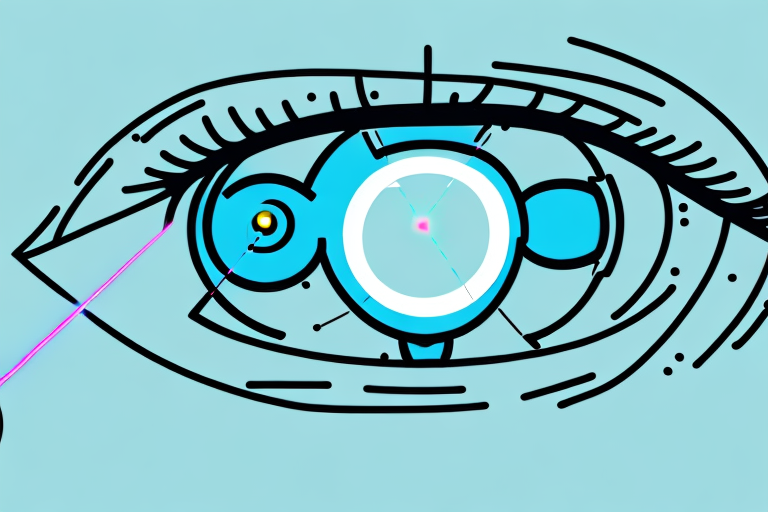If you’re considering laser eye surgery, you may have some questions about what it is, how it works, and what benefits it can provide. In this comprehensive guide, we’ll walk you through everything you need to know about laser eye surgery, including different techniques and what to expect during the procedure and recovery.
Understanding Laser Eye Surgery
Many people who suffer from vision problems such as nearsightedness, farsightedness, and astigmatism have found relief through best laser eye surgery. This procedure uses a laser to reshape the cornea, the clear front surface of the eye, resulting in clearer vision.
What is Laser Eye Surgery?
Laser eye surgery is a highly effective procedure that can improve vision problems that cannot be corrected by glasses or contact lenses. It is a popular option for those who want to reduce their dependence on visual aids or eliminate them altogether.
This procedure is performed by an ophthalmologist, a medical doctor who specializes in eye care. They will use a laser to reshape the cornea, allowing light to enter the eye more accurately and resulting in clearer vision.

How Does Laser Eye Surgery Work?
The procedure begins with the application of numbing eye drops to ensure that the patient is comfortable throughout the surgery. The surgeon will then create a thin flap in the cornea using a small blade or laser. This flap is then lifted, and the surgeon will use a different laser to reshape the cornea, correcting the patient’s vision. The entire procedure usually takes less than 30 minutes and is performed under local anesthesia.
After the procedure is complete, the surgeon will place a protective shield over the patient’s eye to prevent any accidental rubbing or pressure. Most patients experience some discomfort and blurry vision for a few days after the procedure, but this is normal and should subside quickly.
Types of Laser Eye Surgery Procedures
There are several different types of laser eye surgery procedures, each with their own advantages and disadvantages. The most common types are:
- LASIK (Laser-Assisted in Situ Keratomileusis) – This procedure uses a laser to create a thin flap in the cornea, which is then folded back to allow the surgeon to reshape the cornea. The flap is then replaced and left to heal on its own.
- PRK (Photorefractive Keratectomy) – This procedure uses a laser to remove the thin outer layer of the cornea before reshaping it. The outer layer then grows back over the next few days.
- LASEK (Laser-Assisted Subepithelial Keratectomy) – This procedure is similar to LASIK but instead of creating a flap in the cornea, the outer layer is loosened and lifted to allow for reshaping.
- SMILE (Small Incision Lenticule Extraction) – This procedure uses a laser to create a small incision in the cornea, which allows the surgeon to remove a small piece of tissue and reshape the cornea.
Each of these procedures has its own unique benefits and drawbacks, and the best one for a patient will depend on their individual needs and preferences. It is important for patients to discuss their options with their ophthalmologist to determine which procedure is right for them.
Laser eye surgery has a high success rate and can provide long-lasting results. Many patients are able to achieve 20/20 vision or better after the procedure, allowing them to enjoy activities such as driving, reading, and sports without the need for glasses or contact lenses.
Overall, laser eye surgery is a safe and effective option for those looking to improve their vision. With advances in technology and techniques, the procedure has become increasingly popular and accessible, providing a life-changing solution for many people around the world.
The Benefits of Laser Eye Surgery
Are you tired of constantly reaching for your glasses or contacts throughout the day? Do you want to improve your vision and reduce your dependence on corrective lenses? If so, laser eye surgery may be the solution you’ve been looking for. In addition to improving your vision, laser eye surgery offers a number of other benefits that make it a popular choice among patients.
Improved Vision
Laser eye surgery can improve vision in the vast majority of patients. By reshaping the cornea, the procedure can correct common vision problems such as nearsightedness, farsightedness, and astigmatism. After the procedure, most people experience significantly improved vision without the need for glasses or contact lenses.
Imagine waking up in the morning and being able to see clearly without having to reach for your glasses or contacts. With laser eye surgery, this can become a reality.

Reduced Dependence on Glasses or Contact Lenses
After laser eye surgery, many patients will no longer need to wear glasses or contacts for daily tasks such as driving, watching television, or reading. While some may still need glasses for certain activities like reading small print or driving at night, the amount of time spent wearing glasses or contacts is significantly reduced.
This can be a huge advantage for those who lead an active lifestyle and don’t want to be burdened by the hassle of glasses or contacts. It can also save you money in the long run by reducing the need for expensive prescription lenses and contact solutions.
Long-lasting Results
The results of laser eye surgery are usually long-lasting, with most patients experiencing improved vision for years after the procedure. Some patients may require a touch-up procedure several years down the road, but the majority will enjoy improved vision for many years to come.
This means that you can enjoy the benefits of improved vision for years without having to worry about constantly needing to update your prescription or undergo additional procedures.
Quick Recovery Time
One of the biggest advantages of laser eye surgery is the quick recovery time. Most patients are able to return to work and normal activities within a few days of the procedure. While it may take several weeks for vision to fully stabilize, most people are able to resume their daily routines quickly and easily.
Unlike other surgical procedures that require weeks or months of recovery time, laser eye surgery allows you to get back to your normal life in a matter of days.
Conclusion
If you’re tired of constantly reaching for your glasses or contacts, laser eye surgery may be the solution you’ve been looking for. With its ability to improve vision, reduce dependence on corrective lenses, offer long-lasting results, and provide a quick recovery time, it’s no wonder why so many people are choosing laser eye surgery to improve their vision and quality of life.
Techniques Used in Laser Eye Surgery
When it comes to correcting vision problems, laser eye surgery has become a popular option for many people. Laser eye surgery is a procedure that uses a laser to reshape the cornea, improving vision and reducing the need for glasses or contact lenses. There are several different techniques used in laser eye surgery, each with its own benefits and drawbacks.
LASIK (Laser-Assisted in Situ Keratomileusis)
LASIK is the most common form of laser eye surgery and is preferred by many patients due to its quick recovery time. During the procedure, the surgeon creates a flap in the cornea using a laser or small blade. This flap is then lifted to allow the surgeon to reshape the cornea with a second laser before the flap is replaced.
One of the benefits of LASIK is that it is a relatively quick procedure, with most patients experiencing improved vision within a few days. However, LASIK may not be suitable for everyone. Patients with thin corneas may not be good candidates for LASIK, as the procedure involves removing some of the corneal tissue. Additionally, LASIK may not be suitable for patients with certain medical conditions, such as autoimmune disorders.
PRK (Photorefractive Keratectomy)
PRK is a procedure where the surgeon removes the thin outer layer of the cornea before reshaping it with a laser. This procedure is less common than LASIK but may be preferred by patients with thin corneas or those who are not good candidates for LASIK.
One of the benefits of PRK is that it does not involve creating a corneal flap, which may be beneficial for patients who are at risk of flap-related complications. However, PRK may have a longer recovery time than LASIK, with some patients experiencing blurred vision for several weeks after the procedure.
LASEK (Laser-Assisted Subepithelial Keratectomy)
LASEK is similar to LASIK but instead of creating a corneal flap, the surgeon loosens the surface layer of the cornea and lifts it out of the way to reshape the cornea with a laser. After the procedure, the surface layer is replaced and allowed to heal.
LASEK may be a good option for patients who are not good candidates for LASIK, as it may be less invasive. However, LASEK may have a longer recovery time than LASIK, with some patients experiencing discomfort or sensitivity for several days after the procedure.

SMILE (Small Incision Lenticule Extraction)
SMILE is a newer type of laser eye surgery that requires only a small incision to correct vision. During the procedure, the surgeon uses a laser to create a small incision in the cornea and remove a small piece of tissue to reshape the cornea.
One of the benefits of SMILE is that it is a minimally invasive procedure, with most patients experiencing a quick recovery time. However, SMILE may not be suitable for patients with certain vision problems, such as astigmatism.
Overall, laser eye surgery can be a safe and effective way to correct vision problems. However, it is important for patients to discuss their options with a qualified eye surgeon and to carefully consider the risks and benefits of each procedure before making a decision.What to Expect Before, During, and After Laser Eye Surgery
Preparing for Your Procedure
Prior to your procedure, your surgeon will conduct a thorough eye exam to determine if you are a good candidate for laser eye surgery. You should also arrange for someone to drive you home after the procedure as your vision may be blurry and you will not be able to drive immediately after.
The Day of the Surgery
The day of your procedure, you will be given topical anesthesia to numb your eye. You will be awake but should not feel any pain. The surgeon will then proceed with the procedure, which usually takes less than 30 minutes to complete.
Post-Operative Care and Recovery
After the procedure, you will be given instructions on how to care for your eyes and what to expect during the recovery process. Your vision may be blurry or hazy for a few days after the procedure, but most patients are able to resume normal activities within a few days.
Potential Side Effects and Complications
As with any surgical procedure, there are potential side effects and complications associated with laser eye surgery. These may include dry eyes, halos or glare, overcorrection or undercorrection of vision, and infection. However, serious complications are rare, and most patients experience few or minor side effects.
Unlocking the Power of Laser Eye Surgery
Laser eye surgery is a safe and effective way to improve your vision and reduce your dependence on glasses or contact lenses. With several different types of procedures available, it’s important to talk to your surgeon about which one is right for you. With quick recovery times and long-lasting results, it’s no wonder why laser eye surgery is becoming an increasingly popular option for those looking to improve their vision.

